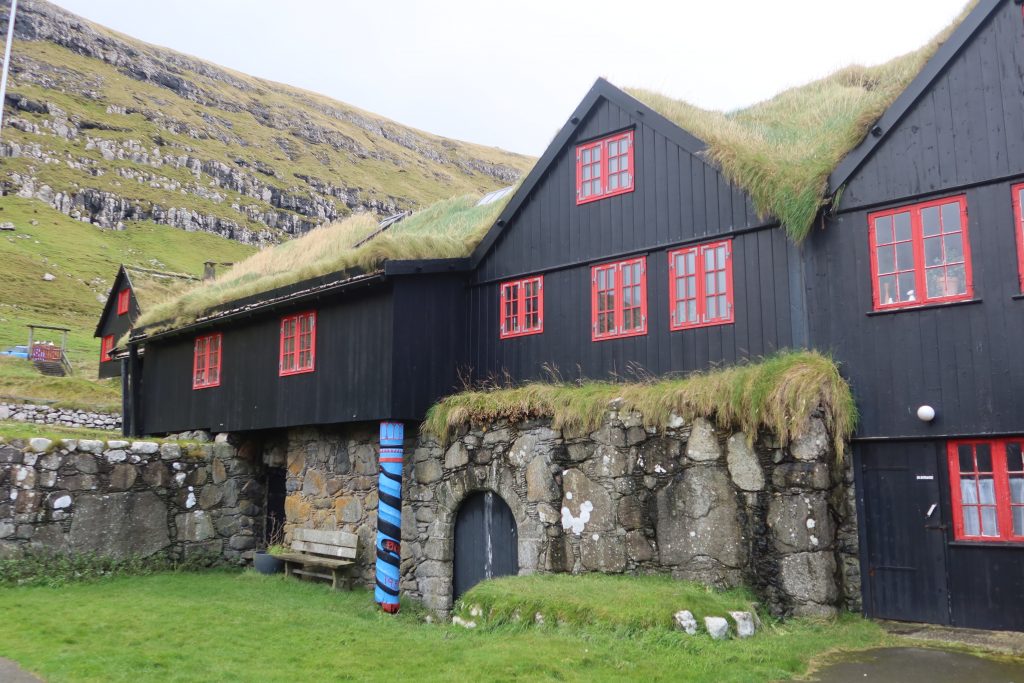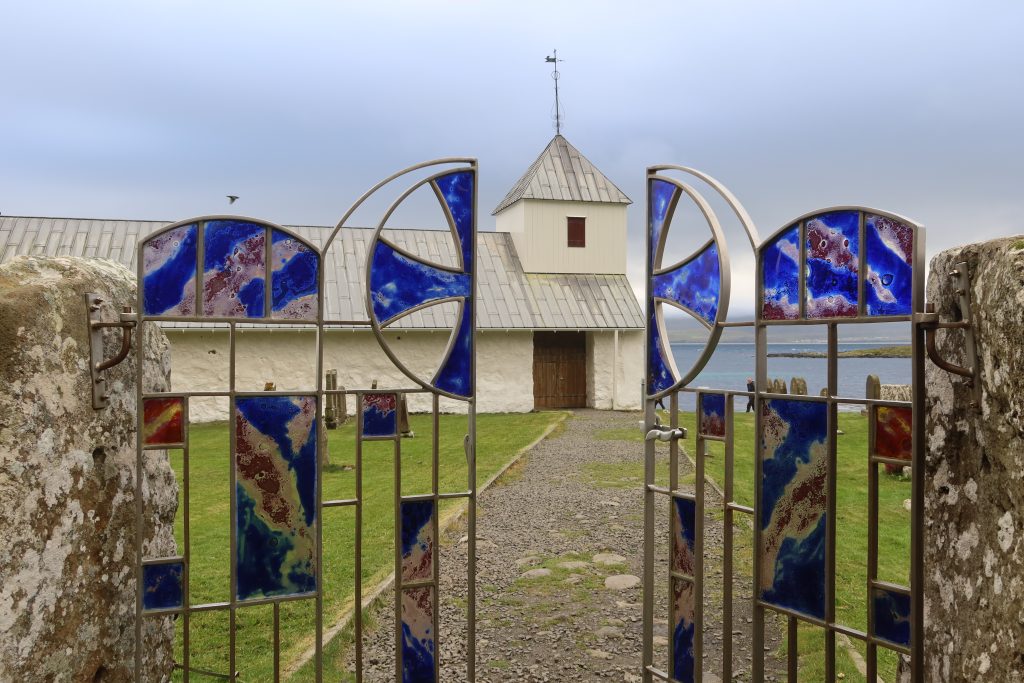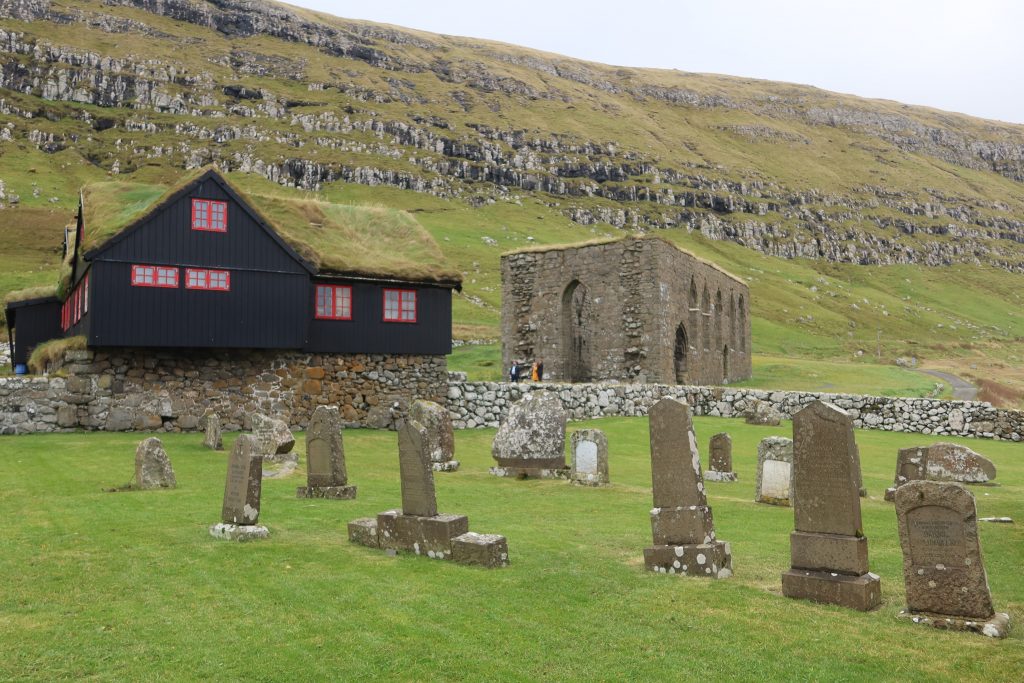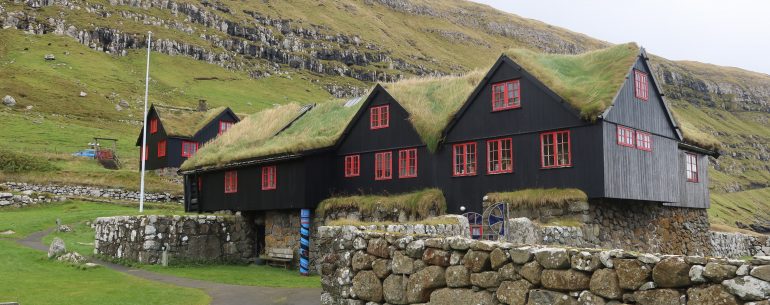Moving on …. As we need to keep doing …. Today was a fairly short move down to Tórshavn, the capital of the Faroes and for me, a second visit as we had already had a morning there on the Smyril ferry. The weather sort of played ball with a bit of a sail, but half motor-sailing and half sailing. Still, it was only a 20mile leg and so didn’t take long – by lunchtime we were ensconced opposite the Smyril Line ferry on the south side of the harbour. Coincidentally we had arrived during their stopover on the way to Iceland again – the return leg after dropping Anne in Hirtshals. However, not long after we arrived, they moved on again.

For the afternoon Gijs had arranged for a few taxis to give us a tour of the island and around 1.30pm they duly arrived to pick us up. We split into our watches (seemed the easiest way to organise who went in which taxi) and headed off. The first stop was what the taxi drivers described as the ‘Old Church’. In fact it was a small village called Kirkjubøur. This apparently owes its existence to the vagaries of the wind and currents. The Faroes have no trees as such and so when driftwood washed up on the shores here it seemed almost like a sign to the Irish hermits who first lived here. The wood (for building and fires) was coupled with copious amounts of seaweed which made a good fertiliser for the very poor soil. The Irish though apparently fled as the Vikings took over and also adopted here to land and live and in the 10th century Kirkjubøur flourished. A church was built here and as religious power started to dominate, they also built the medieval Magnus Cathedral. This was finished at the start of the 14th century and served as the main Faroe Islands cathedral until the reformation in 1538. The cathedral still stands, but is sadly roofless. Nevertheless, it is still dominant in what is a relatively small settlement and it walls, which are around 1.5m thick are a testament to medieval builders. Given it is roofless, perhaps this says less about medieval roofers! The village also has various turf-roofed farmhouses and a parish church (the oldest still in use in the Faroes) and the overall effect is timeless and feels like a window to another age.



A stop for a view over the water turned into an excuse for one of the drivers to teach us the Faroese chain dance. It was fairly simple – form a circle and then two steps left and then one right – and so we all tried it. Amazingly I still seemed to have trouble counting to two, but luckily I didn’t trip anyone up. He then sang an appropriate dancing song in Faroese – a language which is apparently more closely related to Icelandic than to Danish, despite the islands being a Danish territory. The drivers did all admit that they would grudgingly support Denmark in a football match, but only if the Faroes weren’t playing. In that case they are fervently patriotic.
From there we headed up over the hills – a slightly fruitless exercise given that the mist had settled over the hills – and made our way slowly up to Gjógv. The word Gjógv in Faroese, means ‘cleft’ and it certainly does what it says on the tin. A natural 200 metre long cleft in the rock makes a vaguely sheltered harbour and the locals rigged up a steep boat lift to winch the fishing boats back up to the village in rough weather. In calmer weather they remain moored at the bottom of the steps. Not many boats remain and the village now is probably better known as a holiday destination than fishing harbour, but the charm lingers.
On the way back to Tórshavn the drivers took us to the underwater roundabout. Many of the islands are linked by tunnels and in a very pragmatic fashion, they decided that to get to two different islands simply needed one tunnel which split towards the end going to both islands – a roundabout under the water was then an obvious choice! Less obvious was the fact that the roundabout was decorated to look like a giant jellyfish and with figures dancing around it – obviously (?!?) doing the Faroese chain dance! We were driven around it a couple of times by the taxi drivers to allow for a photographic record, but to avoid creating an underwater traffic jam, they then headed off back towards Tórshavn.
